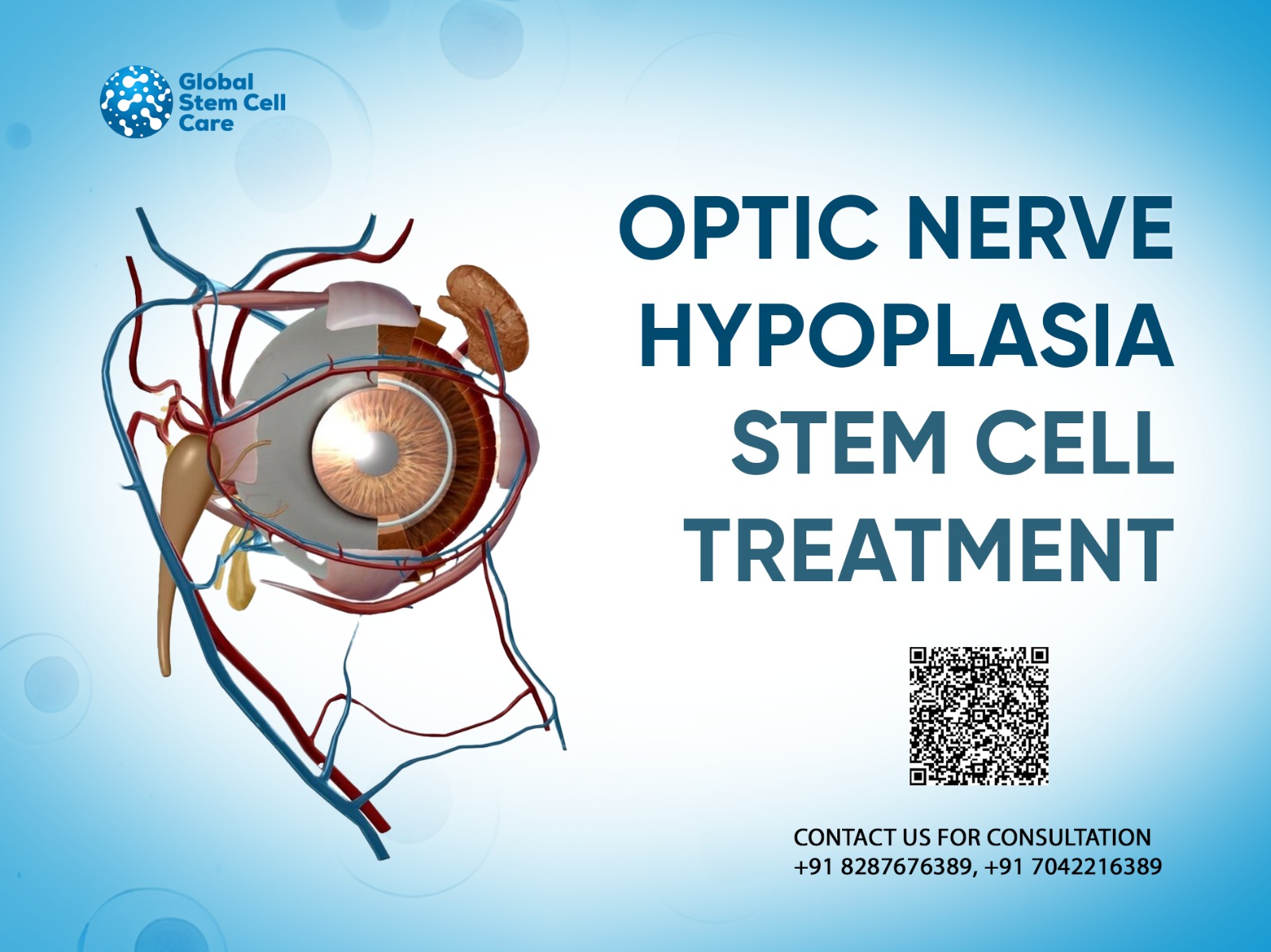This rare and dangerous condition affects one’s eyesight. Optimism was revived with new hopes that come with advancement in regenerative medicine – the availability of optic nerve stem cells. Optic nerve hypoplasia (ONH) Global Stem Cell Care educates patients regarding advanced stem cell transplant therapies worldwide to help improve the life quality of their patients.
What is Optic Nerve Hypoplasia?
It is a birth defect wherein the optic nerve fails to develop well, a part of the optic nerve that conveys visual information from the eyes to the brain. As such, the affected individual will suffer partial or total loss of vision because of this underdevelopment. One or both eyes can be affected, and other developmental or neurological conditions may coexist with this defect.
Causes of Optic Nerve Hypoplasia
There is no obvious cause of optic nerve hypoplasia, but a few reasons might have caused it to occur:
Maternal Health Conditions: A few pregnant women have diabetes, obesity, and drug and alcohol abuse. All these can harm the developing baby inside her.
Hormonal Imbalance: Abnormal hormonal levels during pregnancy can be due to an imbalance in the mother’s system. This might be harmful to the optic nerve in the developing child.
Genetic Factor: Though not transferred to future generations, some inherited disorders can predispose a patient to ONH.
Environmental Factors: Optic nerve hypoplasia might result from exposure to toxins or infection or inappropriate prenatal care while in the womb.
How Stem Cell Treatment Helps
The treatment includes injecting mesenchymal stem cells into the optic nerve and eye. There is always a possibility for these stem cells to replace and repair parts of the undeveloped optic nerve, thus developing vision again. This has been an innovative treatment that gives hope to sufferers of optic nerve hypoplasia by taking care of the root problem. Early intervention and diagnosis are keys to achieving successful outcomes.
Benefits of Stem Cell Transplant for Optic Nerve Hypoplasia
Tissue Regeneration of Optic Nerve: The stem cells differentiate into multiple cell types, they help regenerate the optic nerve, providing all the required types of cells for nerve regeneration.
Improved Vision: During treatment, the patients progressively improve their visual acuity.
Non-Invasive and Safe: This therapy is slightly invasive, and hence less risky than surgery.
Symptoms Reduced: This treatment can cut down symptoms such as nystagmus and aid in eye alignment.
Holistic Development: Positive impact of enhancing vision on cognitive and motor development, especially among children.
The Process of Stem Cell Treatment for Optic Nerve Hypoplasia
The steps involved in the process of stem cell treatment for ONH are as follows:
Consultation and Diagnosis: ONH is diagnosed by an ophthalmologist with the help of a complete eye examination, including a dilated eye exam to view the optic nerve.
Stem Cell Harvesting: Mesenchymal stem cells are obtained from an appropriate source, like bone marrow or adipose tissue.
Pre and injection: The extracted stem cells are processed and prepared for injection. The stem cells are then injected into the eye behind the eye via the retrobulbar route to reach the optic nerve1.
Follow-up care: The patients will receive follow-up care as this is the time to track any possible side effects or change of status. The number of sessions depends on the intensity of ONH.
This novel treatment is designed to regenerate and repair the immature optic nerve, which will improve vision. Early diagnosis and treatment are essential for successful outcomes.
Summary
Optic nerve hypoplasia has a great potential to severely affect vision and development, but regenerative medicine brings new hope. Patients who receive therapies like stem cell transplant and the support of Global Stem Cell Care are able to seek innovative treatments involving optic nerve stem cells. Early diagnosis and intervention make it possible to achieve better outcomes and improve vision for a good quality of life.
